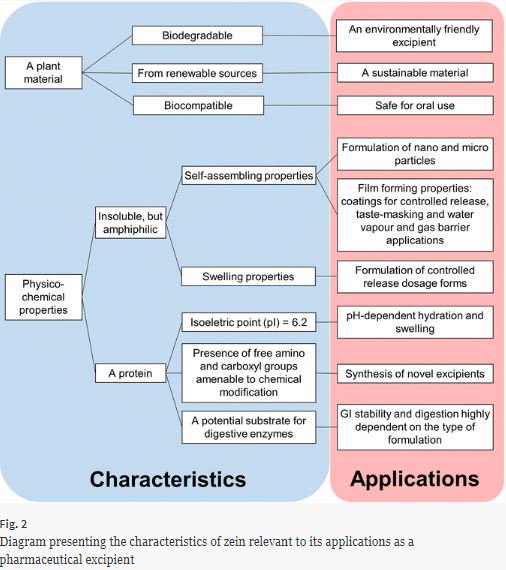- Home
- Blog
- News
- Basics
- Sources
- Agencies, Regulatory & Organisations
- CERSI Excipients Browser
- Excipient Report
- Excipient DMF List
- EXCiPACT Certified Companies
- Excipient Documentation
- Excipient EINECS Numbers
- Excipient E-Numbers
- FDA Inactive Ingredient List
- FDA GRAS Substances (SCOGS) Database
- IPEC Americas
- USP - U.S. Pharmacopeia
- Definitions
- Whitepapers / Publications
- Supplier
- Services
- Media
- Events
- 1st pharmaexcipients Poster Award
- Event Calendar
- Events featured by pharma-excipients
- 4th Annual Formulation & Drug Delivery Congress
- DDF Summit
- ExcipientFest Americas
- ExcipientFest Asia
- Global CompliancePanel
- International Conference and Exhibition on Pharmaceutics & Novel Drug Delivery Systems
- Formulation & Drug Delivery USA Congress
- Laboratory Medicine 2018
- Making Pharmaceuticals Europe
- Making Pharmaceuticals Exhibition
- Pharma Integrates
- PharmaExcipients China @CPhI China
- TTC Technology Training Center
- Jobs
- Online Sourcing
- Contact
04. October 2018
n recent years there has been a growing interest in solid lipid-based systems, particularly in solid lipid microparticles (SLMs); however, only very few studies deeply investigated the dissolution behaviour of orally delivered-SLMs. The present study provides new insights about the release performance in different gastrointestinal fluids of SLMs containing a freely water soluble drug (caffeine, as BCS class I drug). Three different formulations of SLMs were prepared by spray congealing using...
22. September 2018
Zein is the main storage protein of corn and it has several industrial applications. Mainly in the last 10–15 years, zein has emerged as a potential pharmaceutical excipient with unique features. Zein is a natural, biocompatible and biodegradable material produced from renewable sources. It is insoluble, yet due to its amphiphilic nature, it has self-assembling properties, which have been exploited for the formation of micromicroparticle and nanoparticle and films. Moreover, zein can hydrate...
15. September 2018
Both drug delivery performance and various age-related physical, mental and physiological changes can affect their effectiveness and safety in elderly patients. The many drug delivery systems developed over the years include recent novel transdermal, nasal, pulmonary and orally disintegrating tablet delivery systems that provide consistent, precise, timely and more targeted absorption. Certain drug delivery systems may be associated with suboptimal outcomes in the elderly because of the nature...
13. September 2018
The study aimed at investigating the potential of spray drying method for encapsulation of protein drugs into solid lipid microparticles (MP) and evaluating effects of excipients on encapsulation and release of protein from MP. After transformation of model protein insulin to insulin-phospholipid complex, it was dissolved together with lipid excipients in organic solvent, which was spray-dried to form solid lipid MP. Polymeric MP with D, L-lactic-co-glycolic acid (PLGA) were prepared similarly....
02. September 2018
This study aimed to evaluate the potential of applying pectin and chitosan polysaccharides in pellet formulation. These biopolymers have advantages such as biocompatibility, low toxicity, low price and easy processing which make them interesting candidates for drug delivery purposes. Careful control of pellet porosity is essential to achieve an appropriate drug release profile. Replacing microcrystalline cellulose (MCC) with polysaccharides, especially pectin, leads to increased pellet...
30. August 2018
Hard gelatin capsule (HGC) shells are widely used to encapsulate drugs for oral delivery, but are vulnerable to gelatin cross-linking, which can lead to slower and more variable in vitro dissolution rates. Adding proteolytic enzymes to the dissolution medium can attenuate these problems, but this complicates dissolution testing and is only permitted by some regulatory authorities. Here, we expand the scope of our previous work to demonstrate that canisters containing activated carbon (AC) or...
25. August 2018
Chitosan is a cationic polysaccharide that exhibits mucoadhesive properties which allow it to adhere to mucosal tissues. In this work, we explored chemical modification of chitosan through its reaction with methacrylic anhydride to synthesise methacrylated derivative with the aim to improve its mucoadhesive properties. The reaction products were characterised using 1H NMR, FTIR and UV–Vis spectroscopy. 1H NMR and ninhydrin test were used to quantify the degree of methacrylation of chitosan....
25. August 2018
Solid dispersions (SDs) represent an important formulation technique to achieve supersaturation in gastro-intestinal fluids and to enhance absorption of poorly water-soluble drugs. Extensive research was leading to a rather good understanding of SDs in the dry state, whereas the complex interactions in aqueous medium are still challenging to analyze. This paper introduces a fluorescence quenching approach together with size-exclusion chromatography to study drug and polymer interactions that...
25. August 2018
In recent years, excipient development has become a core area of research in pharmaceutical drug delivery because it influences the formulation development and drug delivery process in various ways. Polymeric drug delivery systems have been of great interest for controlled delivery as they show the great advantage in drug delivery systems because of optimized drug loading and releasing property. Then, the side effects of synthetic polymers far exceed that it leads to some difficulties like they...
18. August 2018
In contrast to classic single-unit dosage forms such as tablets, the dosage of the drug substance in multi-particulate systems is divided on a plurality of subunits – typically consisting of thousands of spherical pellet particles with a diameter of between 100 and 2,000 μm. This means that non-disintegrating, monolithic single-unit forms retain their structure in the digestive tract, whereas the multi-particular preparations consist of numerous sub-units which disperse after administration....










